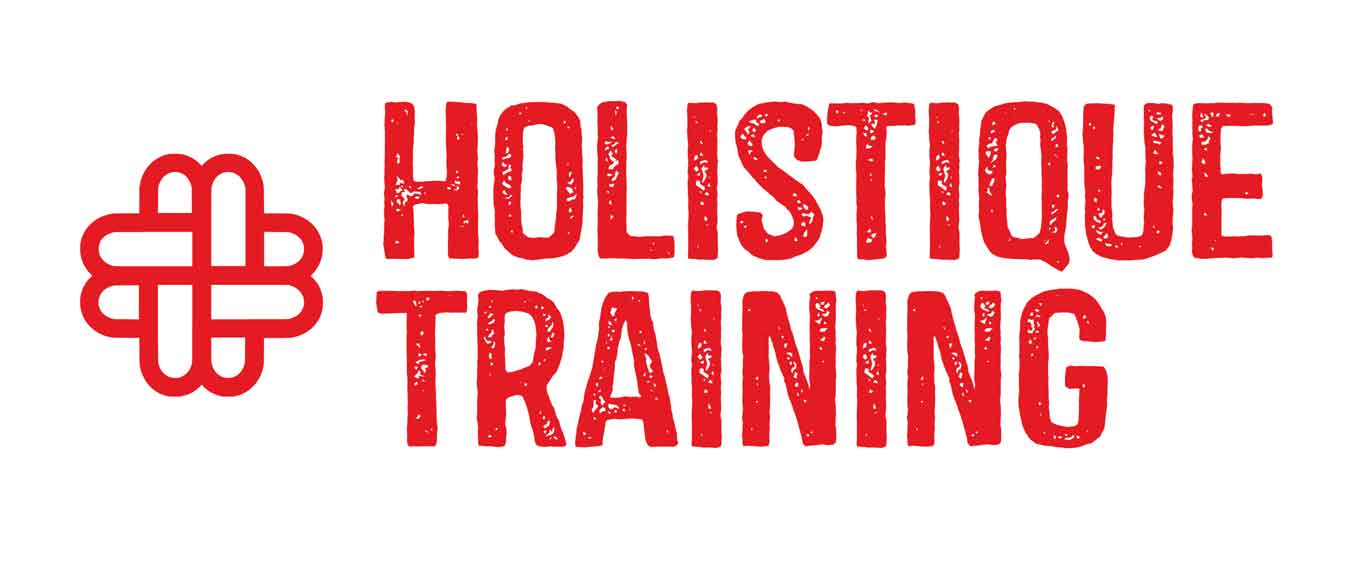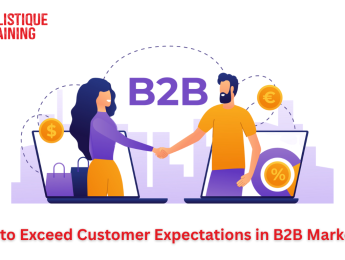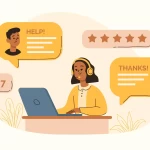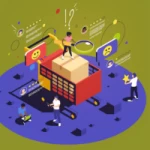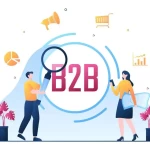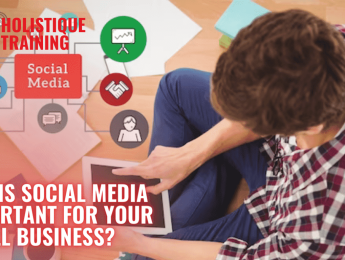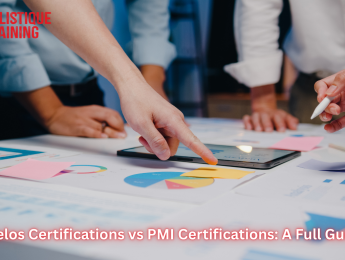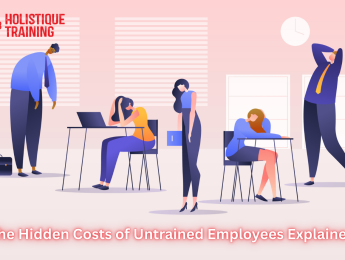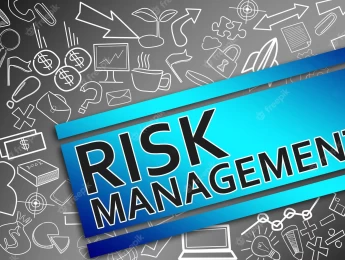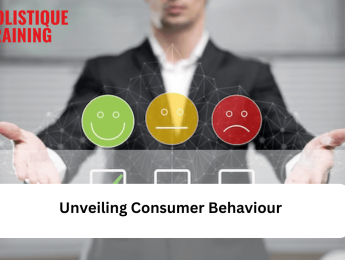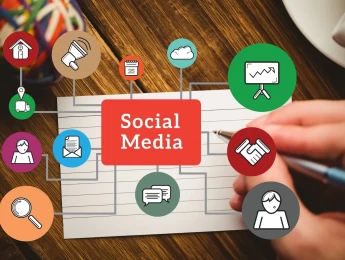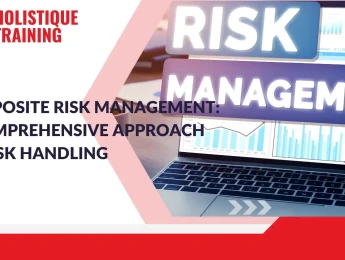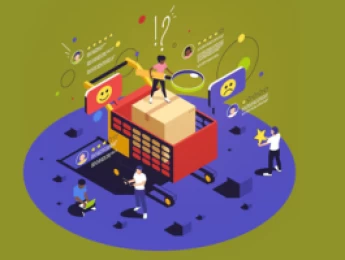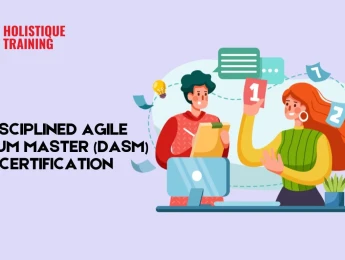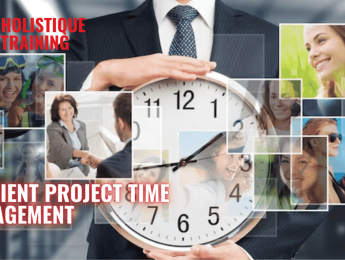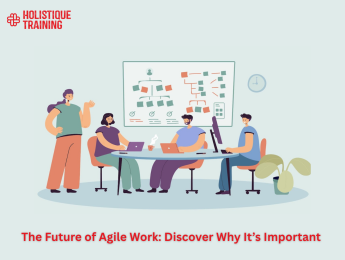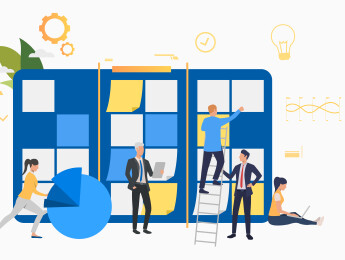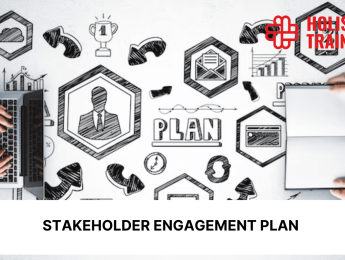- Table of Contents
- Introduction
- 1. Understanding B2B Customer Expectations Today
- 2. The Impact of Exceeding Expectations on Long-Term Relationships
- Increase Customer Loyalty
- Reduce Churn
- Earn More Referrals
- Strengthen Trust and Credibility
- 3. Listening to Your Customers: Feedback Mechanisms That Work
- Best Practices for Gathering Feedback
- 4. Personalisation at Scale in B2B
- 5. Leveraging Technology to Deliver More Than Promised
- 6. Empowering Your Team to Go the Extra Mile
- 7. Proactive Problem Solving and Support
- 8. Building Trust Through Transparency and Communication
- 9. Measuring and Tracking Customer Delight
- Summary Table of Key Strategies
- 10. Case Studies: Companies That Successfully Exceeded B2B Expectations
- Case Study 1: Salesforce — Empowering Customers Through Education
- Case Study 2: FedEx — Proactive Transparency in Logistics
- Case Study 3: IBM — Personalised, Consultative Partnerships
- Conclusion
Introduction
In today’s hyper-competitive B2B (business-to-business) environment, simply delivering on what you promised is no longer enough. Buyers are more empowered, more informed, and have access to a wider array of options than ever before. Thanks to advances in technology and the digital transformation of markets, they demand a level of service, value, and partnership that goes far beyond transactional exchanges.
Today’s B2B customers expect not just products or services but solutions that are personalised, proactive, and seamless, much like their experiences as consumers (B2C). Companies that consistently exceed these expectations don’t just retain customers — they transform them into advocates, secure a stronger market position, and generate sustainable growth.
This article explores the strategies your business can adopt to delight your B2B customers, build trust, and create exceptional experiences that lead to loyalty and profitability. We’ll examine why exceeding expectations is critical, actionable steps to achieve it, and case studies that illustrate these principles in practice.
1. Understanding B2B Customer Expectations Today
The expectations of B2B buyers have evolved significantly in recent years. Why? Because their personal experiences as consumers (B2C — Business to Consumer) have shaped their professional expectations as well. In the B2C world, buyers enjoy fast delivery, personalised recommendations, intuitive digital interfaces, transparent communication, and proactive support — and now they expect the same in their B2B transactions.
What B2B buyers typically expect today:
- Speed: Quick responses to inquiries, fast resolution of problems, and on-time deliveries.
- Accuracy: Reliable information, error-free processes, and dependable outcomes.
- Personalisation: Understanding their unique business context, industry, and challenges.
- Transparency: Clear communication about pricing, timelines, and any potential risks.
- Proactivity: Anticipating needs before the customer asks and offering solutions.
According to the Salesforce State of the Connected Customer (5th Edition), 73% of B2B customers expect companies to understand their unique needs and expectations, and 62% expect companies to adapt based on their behavior.
This shift has blurred the line between B2C and B2B, making it essential for B2B organisations to embrace customer-centric approaches similar to those pioneered in the consumer space.
2. The Impact of Exceeding Expectations on Long-Term Relationships
When you consistently exceed customer expectations, the benefits ripple far beyond a single transaction. In the B2B world — where contracts are often large, long-term, and strategically critical — even small, thoughtful actions that go beyond what’s expected can significantly strengthen your business outcomes.
Here we break down the four major benefits of exceeding expectations, with more depth and examples:
Increase Customer Loyalty
When a customer feels truly valued and sees that you invest in their success, they’re much less likely to even consider competitors. This loyalty translates into predictable revenue streams, renewals, and upsells. For example, a software vendor that proactively trains customer teams on new features creates stickiness and discourages switching providers.
Reduce Churn
Customer attrition is costly, especially in B2B, where acquisition costs are high and onboarding is resource-intensive. By proactively delivering exceptional service and anticipating challenges, you remove friction and frustration before they escalate. For instance, a logistics company that detects supply chain disruptions early and offers alternatives can save a client from seeking another provider.
Earn More Referrals
Delighted customers don’t just stay — they talk. Satisfied clients become advocates, recommending your services to peers, partners, or within their own networks. This organic word-of-mouth marketing is especially powerful in tight-knit B2B industries, where trust and reputation are everything. A consulting firm that consistently overdelivers on insights and results will often see referrals flow in from happy clients.
Strengthen Trust and Credibility
In high-stakes environments, trust is everything. Delivering more than promised — whether that’s faster turnaround times, higher quality, or proactive communication — builds your reputation as a dependable and strategic partner. Over time, this credibility positions your company at the top of the client’s preferred vendor list and opens the door to more strategic projects.
These benefits are not merely anecdotal. A well-known Bain & Company study found that increasing customer retention rates by just 5% can increase profits by 25% to 95%, because loyal customers buy more, require less support, and refer others.
This finding underscores that investing in customer delight is not a cost — it’s a growth strategy with measurable, significant returns.
Table: Impact of Exceeding Expectations
Impact Area | Description | Benefit |
Loyalty & Retention | Customers stay longer and sign repeat contracts. | Stable, predictable revenue. |
Reduced Churn | Prevents dissatisfaction and reduces attrition. | Lower cost of acquisition over time. |
Referrals & Advocacy | Customers recommend your brand to others. | New business at low marketing cost. |
Trust & Credibility | Customers view you as a dependable partner. | Easier negotiations and upsell deals. |
Thus, investing in customer delight is not just good service — it’ssmart business strategy.
3. Listening to Your Customers: Feedback Mechanisms That Work
The cornerstone of exceeding customer expectations lies in understanding them — and the most reliable way to achieve that is through active listening. In the B2B context, where relationships are often longer and more complex than in B2C, feedback mechanisms need to be structured, ongoing, and tailored to the customer’s business context.
Companies should move beyond occasional, superficial surveys and develop robust feedback loops that operate at multiple touchpoints throughout the customer journey. Among the most effective tools are post-interaction surveys, which capture immediate reactions following a service or transaction; quarterly business reviews (QBRs), which allow for a more strategic and reflective conversation about overall satisfaction and long-term goals; customer advisory boards, which engage a select group of clients in shaping products and services; and social listening tools, which monitor sentiment and conversations online.
Proactively soliciting feedback does two critical things: it surfaces hidden pain points before they escalate into serious issues, and it identifies opportunities to create additional value for the customer. Both contribute directly to stronger relationships and higher satisfaction.
Best Practices for Gathering Feedback
Method | When to Use | Advantages |
Surveys | Immediately after transactions or projects | Quick insights on specific touchpoints |
Interviews | During long-term engagements | Deeper understanding of context and needs |
Analytics & Usage Data | Continuously | Objective, behaviour-based insights |
Advisory Boards | For strategic planning and innovation | Involves customers in shaping direction |
By embedding these practices into daily operations, companies position themselves as attentive and adaptable partners.
4. Personalisation at Scale in B2B
In the past, personalisation was seen as a luxury in B2B, reserved for top-tier accounts. Today, it is a standard expectation. Even when dealing with hundreds or thousands of customers, organisations must find ways to make each one feel seen, understood, and valued.
Personalisation in B2B extends beyond simply addressing someone by name. It involves leveraging customer data to tailor every interaction to the client’s industry, role, business objectives, and even individual preferences. This requires sophisticated use of customer relationship management (CRM) systems and segmentation strategies.
Practical ways to personalise at scale include analysing CRM data to recommend the most relevant products or services, addressing specific industry pain points in your communication, acknowledging milestones like anniversaries or achievements, and segmenting messages based on the recipient’s role — such as executive summaries for decision-makers and detailed technical data for operational teams.
For example, a software vendor might provide each client with a customised dashboard showing key performance indicators aligned with that client’s strategic goals, demonstrating not only attention to detail but also genuine commitment to their success. When customers see their unique circumstances reflected in your offerings, they are more likely to stay engaged and loyal.
5. Leveraging Technology to Deliver More Than Promised
Modern technology enables companies to exceed customer expectations systematically, efficiently, and even predictively. By embedding digital tools throughout the customer journey, businesses can enhance their responsiveness, accuracy, and value delivery.
CRM platforms play a pivotal role by consolidating customer information and history in a single view, enabling teams to respond more effectively. AI-powered chatbots and virtual assistants provide round-the-clock support, answering routine queries instantly and freeing up human agents to focus on more complex issues. Automation speeds up traditionally slow processes, such as order fulfilment and status updates, significantly reducing friction for the customer.
More advanced tools like predictive analytics and machine learning take service a step further by identifying patterns and anticipating customer needs before they are explicitly voiced. For instance, usage data can alert a vendor that a client is approaching a capacity limit and suggest a solution proactively. This proactive approach not only solves problems faster but also strengthens trust and positions the company as a strategic partner rather than a reactive vendor.
Technology, when applied thoughtfully, bridges the gap between operational efficiency and human-centred service excellence.
6. Empowering Your Team to Go the Extra Mile
No amount of technology, strategy, or policy can compensate for employees who feel powerless or disengaged. In B2B relationships, where interactions often occur between individuals with significant responsibilities on both sides, the human element remains crucial.
To truly deliver exceptional service, employees must be empowered to make decisions and take initiative. This means granting them the authority to solve customer problems creatively — within clear guidelines — without having to escalate everything to management. It also involves equipping them with thorough training that emphasises customer-centric thinking, not just technical proficiency.
Recognition and incentives for outstanding service play a vital role in sustaining high performance. When staff feel their contributions are valued and rewarded, they are more likely to take ownership of the customer experience and consistently go above and beyond.
Frontline employees, in particular, are the face of the company to the customer. When they are well-trained, trusted, and motivated, they can turn even minor interactions into moments of delight that strengthen the customer relationship. Conversely, a disempowered team can quickly undermine even the most well-conceived strategies.
Empowering your workforce is not just about improving morale — it’s a fundamental requirement for delivering the kind of differentiated service that exceeds expectations.
7. Proactive Problem Solving and Support
In B2B relationships, waiting for customers to report problems is no longer acceptable. Proactive support signals that you are genuinely invested in their success and not merely reacting to issues when they escalate.
Organizations that excel at this proactively:
- Monitor systems continuously to detect potential disruptions before they occur.
- Conduct regular health checks of products or services to ensure optimal performance.
- Offer improvement suggestions and optimization opportunities without being asked.
For example, a SaaS company may send clients a monthly usage report highlighting underutilized features that could enhance productivity, or warn them ahead of time if they’re nearing system capacity.
Proactivity reduces friction and shows customers that you view their success as a shared goal. As Forbes notes, proactive customer service improves loyalty and differentiates brands in competitive markets.
8. Building Trust Through Transparency and Communication
Trust is the foundation of any strong B2B relationship. Without trust, even the most technically excellent products or services can fail to maintain a customer relationship over time.
Transparency fosters trust by showing that you have nothing to hide and that you value honesty in the partnership. This includes openly communicating about:
- Pricing structures: clearly explaining all costs upfront, with no hidden fees.
- Timelines and delays: keeping clients informed about progress and setbacks.
- Mistakes and corrective actions: acknowledging errors quickly and presenting concrete solutions.
When companies communicate frequently and candidly, they are seen as dependable partners rather than just vendors. Transparent communication also allows clients to plan and adjust more effectively, strengthening the relationship over time.
According to a Forbes article, transparency and empathy are key to customer retention and loyalty because they establish emotional connections in addition to business value.
9. Measuring and Tracking Customer Delight
Exceeding customer expectations requires that you measure whether your efforts are paying off — otherwise, it’s impossible to know what’s working and what isn’t. Beyond standard satisfaction surveys, B2B organizations should track a variety of metrics that capture both sentiment and behaviour.
Some of the most widely used and effective metrics include:
- Net Promoter Score (NPS): measures willingness to recommend your brand to others.
- Customer Effort Score (CES): measures how easy it is for customers to do business with you.
- Customer Lifetime Value (CLV): estimates the total revenue a customer will generate over their relationship with your company.
These metrics provide clear insights into customer perceptions and help prioritize areas for improvement.
Key Metrics Table
Metric | What It Measures | Why It Matters |
NPS | Loyalty and advocacy | High NPS indicates strong word-of-mouth potential |
CES | Ease of interaction | Lower effort often correlates with higher retention |
CLV | Long-term revenue potential | Helps focus resources on high-value accounts |
By regularly reviewing and acting on these KPIs, companies can stay aligned with customer expectations and continually improve their service.
Summary Table of Key Strategies
Strategy | Action Step |
Understand Customer Expectations | Research and segment customer needs |
Build Long-Term Relationships | Deliver consistent value and trust |
Listen to Customers | Implement effective feedback mechanisms |
Personalise at Scale | Use data to tailor communication and offers |
Leverage Technology | Automate and anticipate customer needs |
Empower Employees | Train and incentivise staff |
Proactive Support | Identify and solve issues before they arise |
Transparent Communication | Be honest and open in all dealings |
Track Customer Delight | Monitor key customer experience metrics |
Learn from Case Studies | Apply best practices from industry leaders |
10. Case Studies: Companies That Successfully Exceeded B2B Expectations
Real-world examples illustrate how customer-centric practices translate into measurable results and competitive advantage.
Case Study 1: Salesforce — Empowering Customers Through Education
Salesforce has redefined what it means to listen to customers and act proactively. The company not only collects constant feedback about its platform, but it also incorporates that feedback into meaningful product enhancements and support programs. One standout initiative is its Trailhead learning platform — a free, gamified training program that empowers users to maximise the value of their Salesforce investment.
By providing customers with the knowledge and skills to succeed, Salesforce strengthens loyalty, reduces churn, and even turns customers into brand advocates. Trailhead has also allowed Salesforce to build a strong community around its brand — a clear example of exceeding expectations through education and enablement.
Case Study 2: FedEx — Proactive Transparency in Logistics
In the highly competitive logistics industry, FedEx has differentiated itself by putting transparency and proactivity at the forefront of its operations. Rather than waiting for customers to inquire about delayed shipments or disruptions, FedEx proactively notifies clients of delivery issues as soon as they are detected.
This approach builds trust by showing customers that the company values honesty and is committed to solving problems quickly. It also reduces anxiety and demonstrates a shared commitment to the customer’s success — key elements of a strong B2B relationship.
Case Study 3: IBM — Personalised, Consultative Partnerships
IBM has moved beyond simply selling hardware and software to offering tailored, consultative solutions that address each client’s unique business challenges. Through dedicated account managers, customised solutions, and even co-creation projects with clients, IBM has shown that understanding the customer’s business deeply and crafting bespoke solutions creates enduring value. This has enabled IBM to maintain long-term relationships with many of the world’s largest enterprises.
These examples illustrate that exceeding expectations does not necessarily mean delivering grand, expensive gestures. Instead, it’s about consistent, thoughtful, and customer-centric actions that strengthen trust, loyalty, and the perception of value over time.
Conclusion
Exceeding customer expectations in B2B is not a one-time effort or a marketing gimmick. It is a cultural shift — embedding empathy, innovation, and operational excellence into the DNA of your organisation. When you deeply understand customer needs, leverage the right technologies, empower your employees, and proactively add value, you position yourself as a trusted partner rather than just a vendor.
The journey toward delighting your customers starts small: choose one or two strategies, measure your progress, and commit to continuous improvement. Over time, your customers will reward your dedication with loyalty, advocacy, and growth opportunities.
If you’re ready to elevate your organisation’s B2B marketing and truly master the skills and strategies required to exceed expectations, we encourage you to enrol in our Mastering Business-to-Business Marketing course. This comprehensive program is designed to equip you with the tools, insights, and best practices to succeed in today’s competitive landscape.
Your customers deserve excellence — and with the right knowledge and mindset, you can deliver it consistently.
